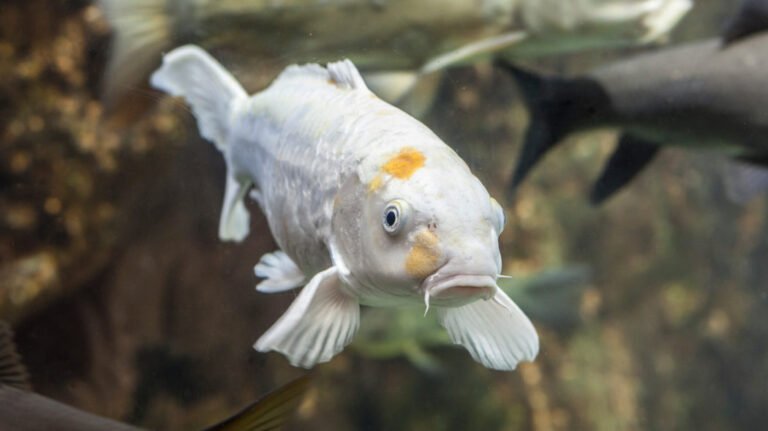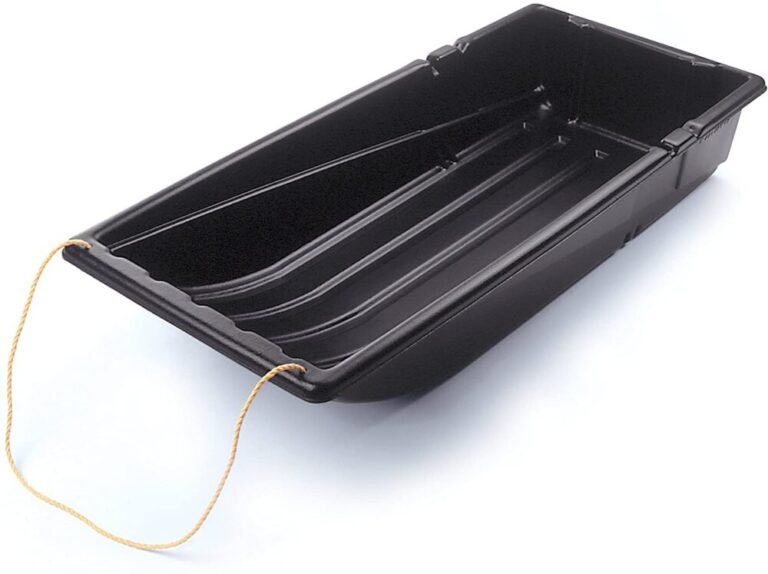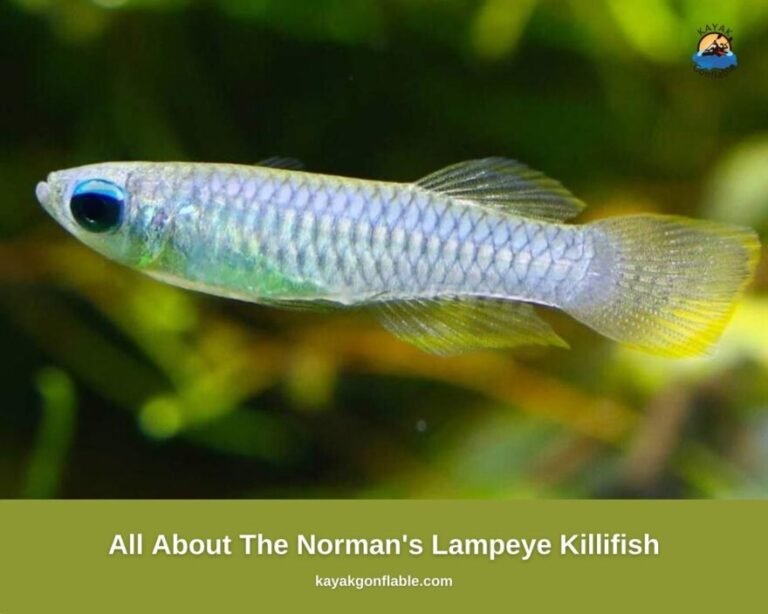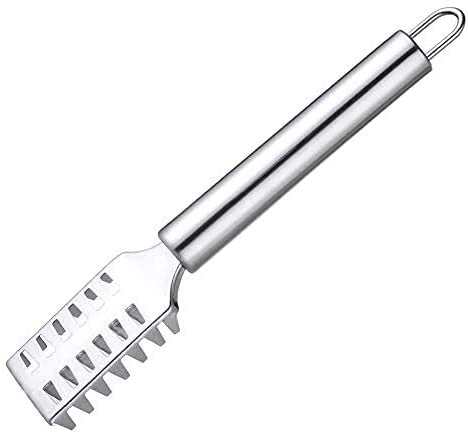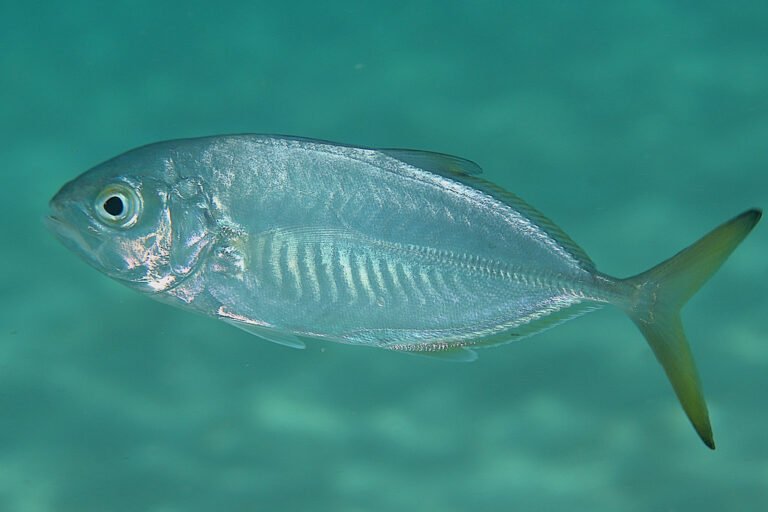Cos'è lo scorfano e che sapore ha?
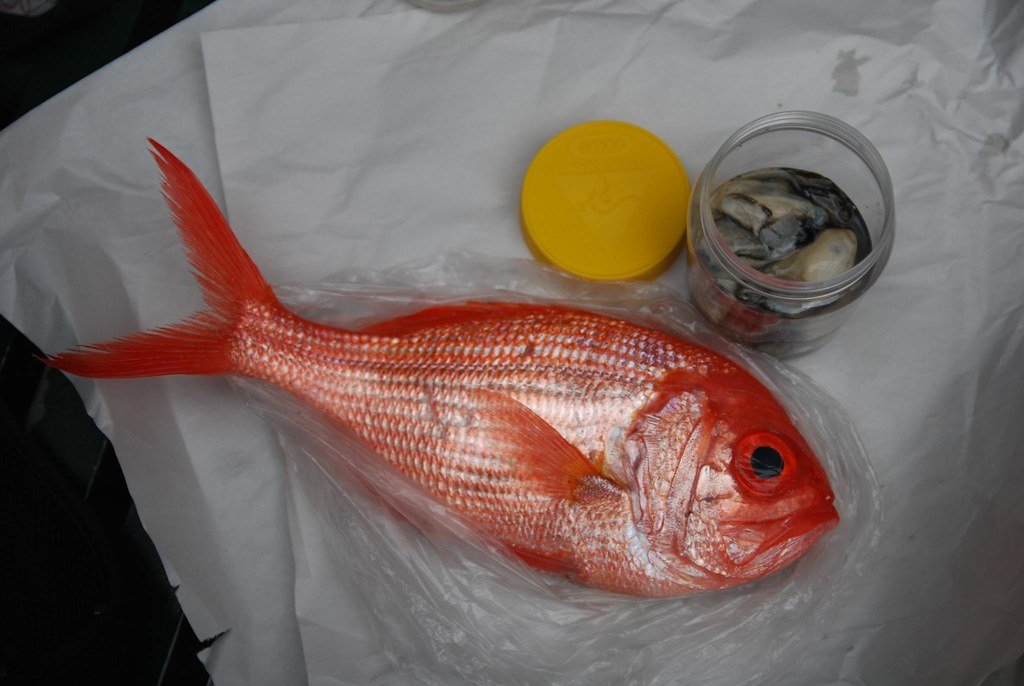
Che cos'è lo scorfano?
Redfish è un nome comune per diverse specie di pesci. Lo scorfano, noto anche come red drum, channel bass, spot tail bass, puppy drum o semplicemente red, è un pesce selvatico popolare (inshore) che si trova naturalmente lungo la costa del Golfo e l'Oceano Atlantico.
Lo scorfano è una specie che fa scuola, può raggiungere in genere tra i 12 e i 14 pollici di lunghezza nel primo anno di vita e può vivere più di 40 anni. Alcuni superano le 50 libbre (22,68 kg) di peso, con il record mondiale attualmente raggiunto di 94 libbre (42,64 kg) (Whew!).
Sono famosi frutti di mare e vengono usati come esca per la pesca delle aragoste. Hanno una caratteristica macchia nera (eyespot), vicino alla parte superiore della base della coda.
Gli scienziati ritengono che la macchia nera intorno alla coda dello scorfano lo aiuti a ingannare i predatori e a fargli attaccare la coda invece della testa del pesce, dandogli così spazio per la fuga.
Sono uno dei pesci da diporto più ricercati della Costa del Golfo. Abitano tipicamente le acque poco profonde lungo i bordi delle baie ricche di vegetazione, ma possono vivere bene anche in acqua dolce.
Sembra che siano attratti anche da luoghi con molto fango morbido e vegetazione sommersa. Il nome "pesce tamburo" deriva dal suono simile a un tamburo che emettono quando vengono tirati fuori dall'acqua o durante il corteggiamento.
Tipi e specie di scorfano
- Scorfano (Centroberyx affinis)
- Lutiano rosso (Lutjanus campechanus)
- Tamburo rosso (Sciaenops ocellatus)
- Pesce rosa (Sebastes norvegicus)
- Scorfano delle Acadi (Sebastes fasciatus)
- Lutiano (Lutjanus buccanella)
- Dentice regina (Etelis oculatus)
- Lutiano (Lutjanus erythropterus)
- Il dentice del Malabar (Lutjanus malabaricus)
- Lutiano meridionale (Lutjanus purpureus)
- Il dentice rosso imperatore (Lutjanus sebae)
- Dentice di corsia (Lutjanus synagris)
- Salmone sockeye (Oncorhynchus nerka)
- Dentice vermiglio (Rhomboplites aurorubens)
- Scorfano di profondità (Sebastes mentella)
- Scorfano di Norvegia (Sebastes viviparus)
Cosa mangiano i pesci rossi?
Prima di rispondere al loro sapore o se è il caso di mangiarli, parliamo un po' di cosa mangiano.
Sono voraci mangiatori (golosi mangiatori di fondo che si nutrono di qualsiasi essere vivente), che consumano pesci esca vivi (sì, i vostri pesci), crostacei, gamberi, granchi, piccole triglie, pesciolini, ecc.
Che sapore ha lo scorfano?
Ora che abbiamo parlato un po' di cos'è uno scorfano e di cosa mangia, potreste chiedervi che sapore ha e se è sicuro mangiarlo (voglio dire, nessuno vuole iniziare a farsi crescere una misteriosa macchia nera sul sedere dopo aver mangiato un branzino, giusto?).
I fusti rossi non sono oleosi (sono poveri di grassi saturi) e hanno un sapore moderato. Quelli più piccoli, di peso inferiore alle 10-15 libbre (da 4,54 kg a 6,80 kg), sono più saporiti.
Hanno un sapore delicato, leggermente dolce e una consistenza mediamente soda (e a scaglie). Sono tipicamente ricoperti di condimento nero e cotti in padella o alla griglia.
Si può mangiare il pesce rosso? (Il pesce rosso è buono da mangiare?)
La risposta semplice è sì, ma è sicuro mangiarlo solo se è cotto correttamente e probabilmente dovreste concentrarvi su scorfani di dimensioni inferiori a 24 pollici o giù di lì.
A differenza del sushi, questo pesce non deve essere consumato crudo perché è molto probabile che contenga parassiti che possono causare molti problemi (per questo motivo deve essere cotto accuratamente prima di essere mangiato).
Questi pesci sono molto popolari tra i pescatori del sud-est e cucinano bianco come la neve. Sono una buona fonte di fosforo, selenio, proteine, calcio, vitamine B12, vitamine B6 e niacina. Impara al riguardo pesci gertrudee che sapore hanno.
Che cos'è e che sapore ha il dentice rosso?
I dentici rossi sono di colore rosso e sono chiamati così per via dei loro denti simili a quelli di un animale. Sono abbastanza facili da distinguere per la loro tonalità rossastra e rosata. Quando si sviluppano e diventano più grandi, il colore rosso diventa più profondo e anche gli occhi diventano rossi.
Possono crescere fino a 35 libbre (15,89 kg) di peso. Hanno scaglie medio-grandi e pinne dorsali spinose. Vengono catturati a scopo commerciale e ricreativo. Qual è la migliore sedia da pesca? Scoprilo qui.
Che sapore ha il dentice rosso?
Davvero, che sapore hanno queste cose?! Immagino che non lo sapremo mai... Scherzo, stiamo per darvi un'idea del sapore dei Red Snapper, quindi sedetevi e fatevi guidare dalle papille gustative!
I dentici rossi sono umidi, con un sapore dolce e delicato di nocciola e una consistenza soda ma delicata. Sono frutti di mare a basso contenuto calorico, proteici e ricchi di selenio. Sono inoltre ricchi di acidi grassi omega-3, potassio e vitamina A.
La loro carne cruda è di colore rosato con striature gialle che diventano più chiare con la cottura. Possono essere cotti in padella, al vapore, al brodo, alla griglia, fritti o al forno.
Possono contenere mercurio, che può essere dannoso per i bambini piccoli e le donne in gravidanza. Anche se le donne incinte e i bambini possono mangiare questo tipo di pesce, dovrebbero limitarne il consumo a pochissime volte al mese.
Scorfano e dentice rosso
Lo scorfano può essere confuso con il dentice rosso, perché, per prima cosa, entrambi iniziano con la parola "rosso". Hanno entrambi un aspetto diverso e vivono cicli di vita diversi.
Ciascuna specie vive in un habitat e in un modo diverso, ma entrambe condividono una storia simile di crisi e recupero lungo la Costa del Golfo.
All'inizio degli anni '80 e '90, questi due pesci sono stati ampiamente sovrasfruttati fino a sfiorare l'estinzione (è un crimine essere un pesce che ha un buon sapore).
Il dentice rosso, che vive comunemente a profondità comprese tra i 100 e i 200 metri, si trova soprattutto in Florida e nella Carolina del Nord, in Nord America. È facile distinguerli per la loro tonalità rossastra e rosata.
Quando si sviluppano e diventano più grandi, il colore rosso diventa più intenso e anche gli occhi diventano rossi (roba da brividi da vedere di notte, lol).
Lo scorfano, invece, si trova comunemente lungo l'Oceano Atlantico e sulla costa del Golfo. Hanno una macchia nera vicino alla base della coda, sono di colore bianco intorno al ventre (metà inferiore) e hanno un colore bronzeo sulla metà superiore.
Scorfano di Norvegia (Sebastes viviparus)
Il Sebastes viviparous, appartenente alla famiglia Sebastidae, è popolarmente conosciuto come scorfano di Norvegia. Si trova comunemente lungo le coste dell'Oceano Atlantico settentrionale.
Scorfano di profondità (Sebastes mentella)
Lo scorfano di profondità viene anche chiamato popolarmente persico oceanico, scorfano dorato e scorfano atlantico. Le dimensioni sono in genere inferiori ai 45 cm (18 pollici), ma possono raggiungere i 55-70 cm (22-28 pollici).
Si trovano in grandi quantità nell'Atlantico settentrionale. Si nutrono di una varietà di frutti di mare, ad esempio piccoli pesci. Hanno una fecondazione interna e generano larve vive. Lo scorfano di profondità assomiglia molto allo scorfano di Acadia.
Lutiano settentrionale (Lutjanus Campechanus)
Originario dell'Oceano Atlantico occidentale, del Mar dei Caraibi e del Golfo del Messico, il dentice rosso settentrionale appartiene alla specie dei pesci marini con pinne raggiate. È un pesce selvatico piuttosto grande e di colore rosso, molto ricercato, con denti corti e aghiformi, e serve anche a scopi commerciali.
La lunghezza massima registrata è di circa 39 pollici (100 cm), il peso massimo pubblicato è di circa 22,29 kg (50 libbre e 4 once) e l'età più vecchia riportata è di oltre 100 anni (Woow, un pesce vecchio come la nonna). Non hanno un unico habitat preferito, le loro preferenze cambiano con la crescita e la maturità.
Sono di colore rosso chiaro, con una colorazione più intensa sul dorso. Questa specie gregaria forma grandi banchi intorno a relitti e scogliere con pesci di dimensioni simili.
Lutiano (Lutjanus erythropterus)
Comunemente presente nell'Oceano Pacifico e Indiano, il dentice cremisi è un cacciatore prevalentemente notturno, appartenente alla specie dei pesci marini a pinne raggiate. È anche popolarmente chiamato persico di mare cremisi, nannygai piccolo, orata rossa e persico di mare alto.
Si sa che hanno una durata di vita massima di circa 42 anni e che si riproducono durante tutto l'anno in Indonesia e in Australia. Gli adulti sono tipicamente di colore rosso-rosa o argento e si nutrono di cefalopodi (come piccoli calamari, polpi, ecc.) e crostacei.
La lunghezza tipica è di circa 18 pollici (45 cm), ma la lunghezza massima registrata per questa specie è di circa 32,1 pollici (81,6 cm).
Salmone sockeye (Oncorhynchus Nerka)
Il salmone sockeye è anche popolarmente chiamato salmone kokanee o salmone blueback (a causa del suo colore). È una specie anadroma (risale i fiumi dal mare per deporre le uova). La loro dieta consiste principalmente di zooplancton. I salmoni sockeye sono semelpari (cioè muoiono dopo la deposizione delle uova).
Sono presenti nel Pacifico orientale, nell'isola di Hokkaidō settentrionale in Giappone, nell'insenatura di Bathurst nell'Artico canadese e nel fiume Anadyr in Siberia. Il salmone sockeye si nutre principalmente di zooplancton, mentre piccoli organismi come gamberetti e insetti fanno parte della dieta dei giovani.
Durante la deposizione delle uova sono principalmente di colore rosso. Per questa specie, le femmine sono responsabili dell'educazione dei genitori e in genere si osserva un drastico dimorfismo sessuale alla maturità.
Pesce rosa (Sebastes Norvegicus)
Il pesce rosa è noto anche come persico oceanico e eglefino di Norvegia. È un pesce di grandi dimensioni a crescita lenta e a maturazione tardiva. Si trova comunemente lungo le coste dell'Europa settentrionale e del Nord America orientale.
Il dentice rosso imperatore (Lutjanus Sebae)
Il dentice rosso imperatore, chiamato anche dentice reale, è caratterizzato da un muso fortemente inclinato e appartiene alla specie dei pesci marini con pinne raggiate.
Con una lunghezza massima di 116 cm e un peso massimo pubblicato di 32,7 kg, il dentice rosso imperatore ha un colore complessivo che va dal rossastro al rosa e si trova comunemente nella regione dell'Indo-Pacifico, nell'Africa orientale, nell'Oceano Pacifico, nella Nuova Caledonia, in Australia e in Giappone.
Questa specie abita sia le barriere coralline che le zone rocciose. Sono pesci predatori e si nutrono di pesci, crostacei bentonici e cefalopodi. Si tratta di una specie a crescita lenta. In genere si muovono in banchi con pesci di dimensioni simili o da soli. Possono vivere fino a 40 anni.
Dentice vermiglio (Rhomboplites Aurorubens)
Il dentice vermiglio, comunemente chiamato anche dentice testa di rondine e dentice notturno, appartiene anch'esso alle specie di pesci marini con pinne raggiate.
Originario dell'Oceano Atlantico occidentale e presente anche nella Carolina del Nord, nelle Bahamas, nelle Bermuda, nel Golfo del Messico, nel Mar dei Caraibi e a Santa Catarina, in Brasile, possiede un muso corto e un corpo oblungo.
In genere si muovono in grandi banchi e la deposizione delle uova avviene durante tutto l'anno. Si tratta di un pesce a crescita lenta che si nutre di piccoli pesci, gamberetti, granchi, cefalopodi e altri invertebrati.
Dentice rosso meridionale (Lutjanus Purpureus)
Il dentice rosso meridionale o dentice rosso dei Caraibi è caratterizzato da un occhio grande, un'incisione poco sviluppata e un muso corto e smussato, con semplici fori per le narici. Si riproduce durante l'estate e la primavera, ha una vita stimata di 12-18 anni e appartiene alla specie dei pesci marini con pinne raggiate.
Sono predatori e la loro dieta consiste in gamberetti, pesci, granchi e cefalopodi. Con una lunghezza massima di 100 cm e un peso massimo pubblicato di 10 kg, questo pesce si trova comunemente nell'Oceano Atlantico occidentale e nel Mar dei Caraibi.
Il dentice del Malabar (Lutjanus Malabaricus)
Diffuso nel Giappone meridionale, nel Pacifico indo-occidentale, in Australia, nelle Fiji, nell'Oceano Indiano, nella Corea del Sud, a Tonga e a Kosrae, il Malabar Blood Snapper, come il Crimson snapper, è un cacciatore prevalentemente notturno appartenente alla specie dei pesci marini con pinne raggiate.
La testa e la bocca più grandi sono un importante fattore di differenziazione rispetto al dentice scarlatto. È anche popolarmente chiamato saddle tail snapper, persico di mare dalla bocca larga o imperatore scarlatto. Pur avendo una lunghezza tipica di circa 50 cm, questo pesce ha stabilito un record di lunghezza massima di circa 100 cm e un peso massimo pubblicato di circa 7,9 kg.
È stato osservato che i giovani prediligono le acque poco profonde vicino alle coste, ma gli adulti preferiscono aree più profonde e si trovano tipicamente nelle scogliere costiere e d'altura. Come il dentice cremisi, si nutre di cefalopodi (come piccoli calamari, polpi, ecc.), crostacei e invertebrati bentonici (creature del fondo marino prive di vertebre, cioè di spina dorsale).
Scorfano delle Acadi (Sebastes Fasciatus)
Lo scorfano delle Acadi, chiamato anche scorfano delle Acadi e scorfano del Labrador, appartiene alla specie dei pesci marini di acque profonde. Può vivere fino a 50 anni e può raggiungere i 50,8 cm di lunghezza.
Di colore rosso-arancio e originari dell'Oceano Atlantico nord-occidentale, della Groenlandia occidentale, della Virginia, del Golfo di San Lorenzo, della Nuova Scozia e dell'Islanda, sono ovovivipari (producono piccoli tramite uova che vengono covate all'interno del corpo del genitore) e depongono le uova in autunno e alla fine dell'inverno. Si nutrono di una pletora di alimenti, tra cui crostacei, molluschi e piccoli pesci.
Lutiano (Lutjanus Buccanella)
Il dentice a pinna nera, noto anche come dentice rosso a pinna nera e dentice a macchia nera, appartiene alla specie dei pesci marini con pinne raggiate e si trova comunemente nell'Oceano Atlantico occidentale, nelle Bahamas, nel Golfo del Messico, nella penisola dello Yucatan settentrionale, nelle Bermuda, nella Carolina del Nord, a Cuba, nel Mar dei Caraibi, nella costa sudamericana e a San Paolo, in Brasile.
Sono predatori opportunisti dei fondali marini che si nutrono di piccoli pesci, gamberetti, vermi, ecc. Si accumulano anche in piccoli banchi poiché sono una specie sociale. È stato registrato che gli snapper pinna nera depongono le uova durante tutto l'anno, con picchi intorno ad aprile e settembre. La lunghezza massima registrata per questo pesce è di circa 30 pollici (75 cm) e il peso massimo pubblicato è di circa 30,9 libbre (14,0 kg).
Dentice regina (Etelis Oculatus)
Il dentice regina, un pesce bagnodemersale (un pesce demersale che vive/si nutre sott'acqua al di sotto dei 200 m), popolarmente chiamato anche dentice notturno o dentice di tesa, appartiene alla specie dei pesci con pinne raggiate. È originario dell'Oceano Atlantico occidentale ed è l'unica specie del suo genere presente al di fuori della regione indopacifica.
Con un corpo allungato e snello, questo pesce è caratterizzato da grandi occhi gialli, un'iride rossa e un muso corto. La sua presenza si estende anche al Golfo del Messico, alle Bermuda, alla Carolina del Nord, alle isole Fernando de Noronha e Atol das Rocas del Brasile, alla costa atlantica degli Stati Uniti, al Mar dei Caraibi e a San Paolo del Brasile.
Dentice di corsia (Lutjanus Synagris)
Il dentice di corsia, popolarmente chiamato anche dentice messicano o dentice spot, appartiene alla specie di pesci marini con pinne raggiate. Ha il muso molto appuntito e il corpo oblungo e compresso. Lo snapper di corsia ha una lunghezza massima registrata di circa 24 pollici (60 cm) e un peso massimo pubblicato che arriva a circa 7,7 libbre (3,5 kg).
Diffusi nell'Oceano Atlantico occidentale, nel Mar dei Caraibi, nel Golfo del Messico, nella Carolina del Nord, nelle Bermuda, a Santa Catarina e in Brasile, i dentici messicani sono predatori notturni e opportunisti che consumano diversi animali. In genere si nutrono di crostacei, cefalopodi e pesci più piccoli.
Le migliori esche per il pesce rosso (Qual è la migliore esca per il pesce rosso?)
Come catturare il pesce rosso (Red Drum) (Consigli di pesca per acque poco profonde)
Come cucinare il tamburo rosso e grigliare il pesce rosso
Ricetta dello scorfano alla griglia (da BBQGuys.com)
La marinata (facoltativa):
- 1/4 di tazza di salsa Worcestershire
- 1/4 di tazza di olio extravergine di oliva
- 1/4 - 1/2 cucchiaino di pepe di Caienna
- 1/4 di cucchiaino di timo secco
- 1 cucchiaio di paprika (si può aggiungere anche pepe macinato fresco e un po' di sale marino per aumentare il gusto)
- 1 cipolla gialla
- 1 limone
- 2 spicchi d'aglio interi
- 1 mazzo di prezzemolo
- 1/2 panetto di burro (non salato/ a cubetti) - burro
Processo di grigliatura:
- Adagiare i filetti di scorfano in una ciotola con i lati verso l'alto.
- Versare gli ingredienti della marinata sui filetti e strofinarli bene. Una volta fatto, mettere da parte.
- Affettare l'aglio, la cipolla e mezzo limone (a fette sottili).
- Spremere l'altra metà del limone riservato sul pesce.
- Disporre la cipolla e l'aglio tagliati a fettine sottili sul pesce e lasciare marinare per circa 30 minuti.
- Successivamente, devi preriscaldare il tuo griglia a fuoco medio e poi mettere i filetti sulla griglia con la parte carnosa rivolta verso il basso.
- Una volta che la parte carnosa ha ottenuto un bel colore e i segni della griglia sono evidenti, girate la parte carnosa del filetto verso l'alto e aggiungete le fette di cipolla e aglio che avete conservato in precedenza.
- Una volta che il pesce è cotto per circa 20 minuti, disporre una pentola di ghisa sulla griglia.
- Aggiungere il burro, una volta sciolto per metà togliere la padella dal grill e aggiungere il prezzemolo.
- Condire la salsa con un po' di sale marino per aumentare il sapore e una spruzzata di limone, naturalmente.
- Togliere il tamburo rosso dalla griglia e versarvi sopra la salsa. Si può anche pensare di guarnire la parte superiore dei filetti con alcuni limoni tagliati a fettine sottili.
Altre incredibili ricette di tamburi rossi si trovano qui: https://www.wikihow.com/Cook-Redfish
Come cucinare lo scorfano
Come sfilettare un tamburo rosso
Per la preparazione, la sfilettatura è una delle opzioni più popolari. Assicuratevi di avere a portata di mano un coltello affilato a lama sottile, poiché un coltello smussato finirebbe per rendere tutto più disordinato. Sfilettare questo particolare tipo di pesce può essere piuttosto difficile perché ha squame corazzate molto spesse e costole dure.
- Eviscerare il pesce: inserire un coltello affilato a lama sottile tra le pinne pettorali del pesce, spostarlo verso il basso fino allo sfiatatoio e aprire la cavità del corpo. Rimuovere e scartare le interiora.
- Posizionate il coltello proprio dietro le branchie e tagliate lateralmente il corpo fino al tratto anale.
- Girate il pesce e praticate un taglio lungo lungo la zona della spina dorsale (usate la punta del coltello e non tagliate attraverso la spina dorsale).
- Continuare a tagliare con la punta del coltello fino al termine. Abbiamo fornito questo video per aiutare a sfilettare meglio di quanto possiamo spiegare a parole...
Che cos'è uno scorfano?
Uno scorfano toro è semplicemente uno scorfano di oltre 26″ (66 cm) di lunghezza.
Che sapore ha l'eglefino?
L'eglefino ha una consistenza media a scaglie (tenera ma compatta), una carne bianca e magra e un sapore leggermente dolce. Sono più saporiti e più ricchi di pesce rispetto al merluzzo.
Che sapore ha l'orata?
Si tratta di pesci d'acqua dolce con bei filetti a scaglie sottili. Con una consistenza soda ma abbastanza delicata, hanno un sapore dolce e sottile, una consistenza burrosa in bocca e un basso livello di sapore di pesce.

